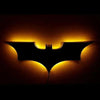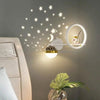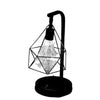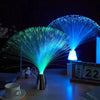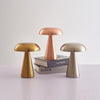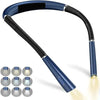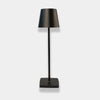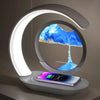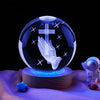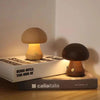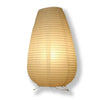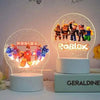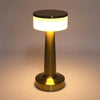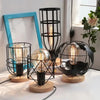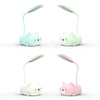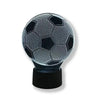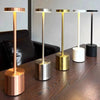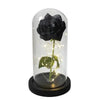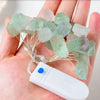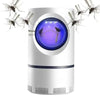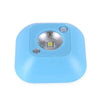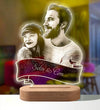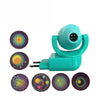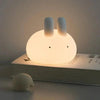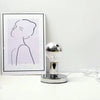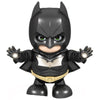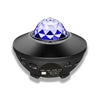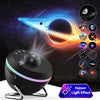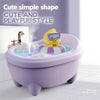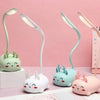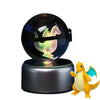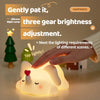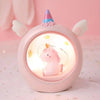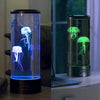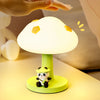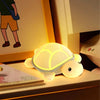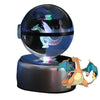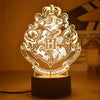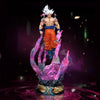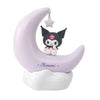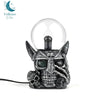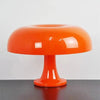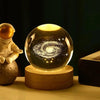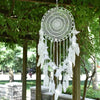Demystifying How Touch Lamps Work

Have you ever wondered if those nifty touch-activated touch lights require a special type of bulb to work?
When you can turn a light on and off with just a flick of your finger, it seems like there's something more than meets the eye.
Are touch lamp bulbs different from normal bulbs? This is exactly what we are going to dissect today!
Touch lamps have become popular for their functionality similar to the magic of the space age. Just a touch – and voilà – the light turns on!
No need to fumble for a switch in the dark. But what makes them work? Is there advanced bulb technology powering these tactile marvels? Or is it the secret that goes on behind the scenes?
Let’s shed some light on the question about touch lamps, shall we?
Short Introduction to Touch Lamps
Touch lamps are a unique type of lighting that turns on or off simply by touching any part of the base or body of the lamp.
Unlike traditional lamps operated by a switch, touch lamps use sensor technology to detect the presence of your hand and activate the light.
When you touch the lamp, you essentially complete a circuit that triggers the bulb to turn on. Touching the lamp again interrupts the circuit and turns off the light. Its lighting is incredibly simple!
But how exactly does a touch lamp and its magic work?
The secret lies in the copper wiring embedded in the base or body of the lamp. This wiring acts as a capacitive sensor or antenna that generates an electrostatic field.
When you bring your hand closer to the lamp, the electric field generated by your hand interferes with the electrostatic field of the copper wiring.
This interaction triggers a small change in voltage that flips the switch to turn the light on or off. Pretty cool, right?
Do Lamps Require Specific Bulbs?
When it comes to most home lighting, there are generally no “special” bulb requirements.
Including touch lamps ! Any standard bulb that matches the lamp's specifications in terms of base, shape, brightness, and wattage can generally be used, whether LED, incandescent, halogen, or another variety.
The exception might be for some high-end designer lamps with proprietary bulbs. But in general, the lamps are compatible with a range of readily available bulbs.
Simply replace a bulb that matches the lamp's specifications, and let there be light!
Compatibility of Touch Lamp Bulbs!
Incandescent, Halogen
When looking for the right bulb for your touch lamp, check the manufacturer's specifications for recommended wattages and bulb types.
Many touch lamps are designed to work with standard incandescent or halogen bulbs. Using the bulb size and wattage specified by the manufacturer will ensure proper operation.
Touch lamps generally require bulbs from 25W to 100W. Opting for an incompatible power could hamper the performance of the touch sensor. Stick to the recommended bulb types, and your touch lamp will work like a charm!
Use of LED Bulbs in Touch Lamps
Can LED bulbs be used in touch activated lamps? Absolutely !
The key is to ensure that the LED bulb you choose fits the lamp correctly in terms of bulb shape, base type and wattage. As long as the LED bulb's specifications match the lamp's requirements, the touch technology should work just fine.
An advantage of LEDs is that they remain cool to the touch compared to incandescent bulbs. Simply check bulb compatibility, and you can enjoy the benefits of LEDs with the convenience of touch activation.
How Are Touch Lamps Activated?
Touch lamps feature clever built-in technology that responds to your hand to turn the light on and off. There are a few different ways to activate the touch lights:
Hitting Specific Points
Most touch lamps have designated touch points marked on the base or body that you will want to touch. The lamp detects capacitive signals from your fingers when you touch these specific areas.
Once you know where the activation points are, you can easily control the lamp.

Touch Base/Body
Instead of a tap, some touch lamps simply require contact anywhere on the base or body. Simply touch the outer casing to complete the circuit and turn the light on or off.
No specific points to touch – just touch the base, collar or the body as a whole. Simple !
Presence of the Hand Nearby
Advanced touch lamps contain sensors that detect when your hand approaches the lamp. Without physically touching, the electrical disturbance triggered by the presence of your hand is sufficient to activate the tactile mechanism.
As if by magic, the light turns on or off when you wave your hand near the lamp.
Dimming Capabilities
While most touch lamps operate with a basic on/off function, higher-end models include dimming. By continuously holding or contacting the touch points, the brightness of the bulb can be adjusted up or down.
For smooth dimming control, incandescent bulbs tend to work best.
Conclusion
Touch light technology offers a unique, simple and convenient way to turn your lights on and off. Eliminating the need for a traditional switch, a simple flick or touch can activate the lamp.
The key points regarding bulbs: No special bulbs are required, most standard bulbs will work the lamp just fine, but always check the manufacturer's specifications for compatible wattages and base types.
Touch lamps exemplify intelligent design by combining sophisticated sensor technology with everyday lighting functionality.
Try one and experience smarter, touch-activated illumination!

